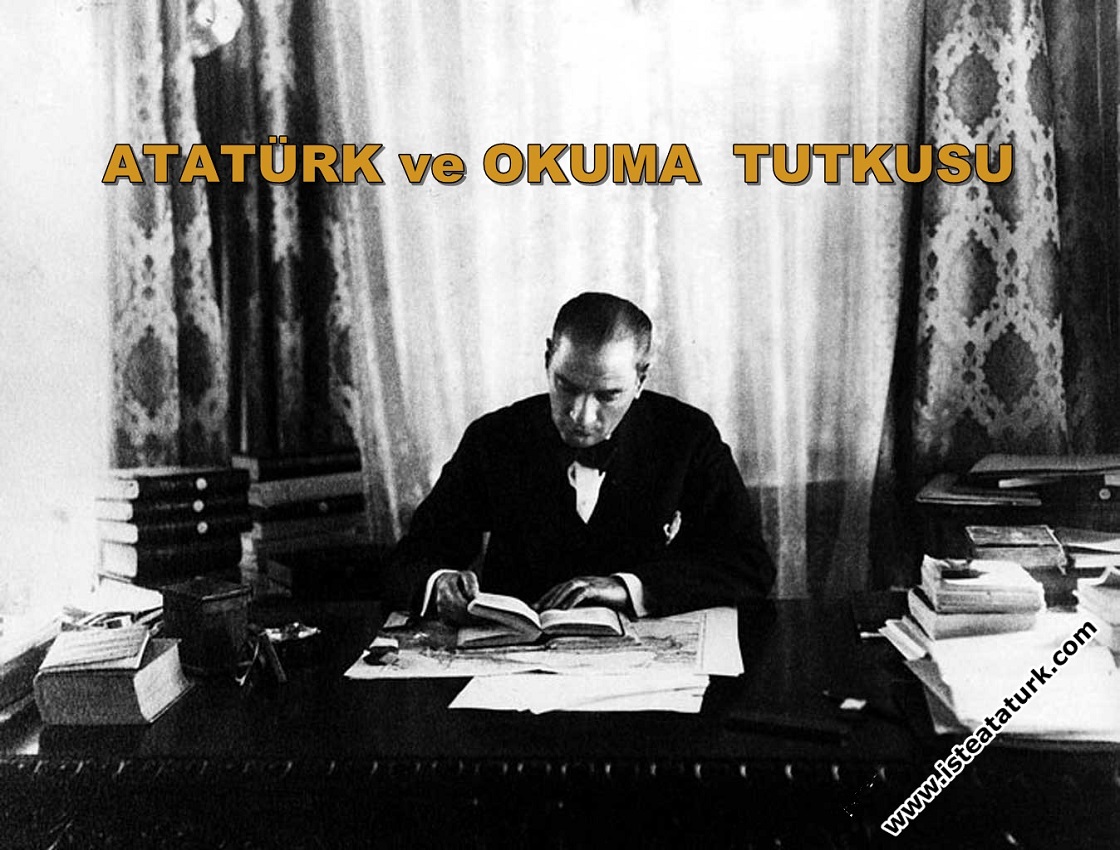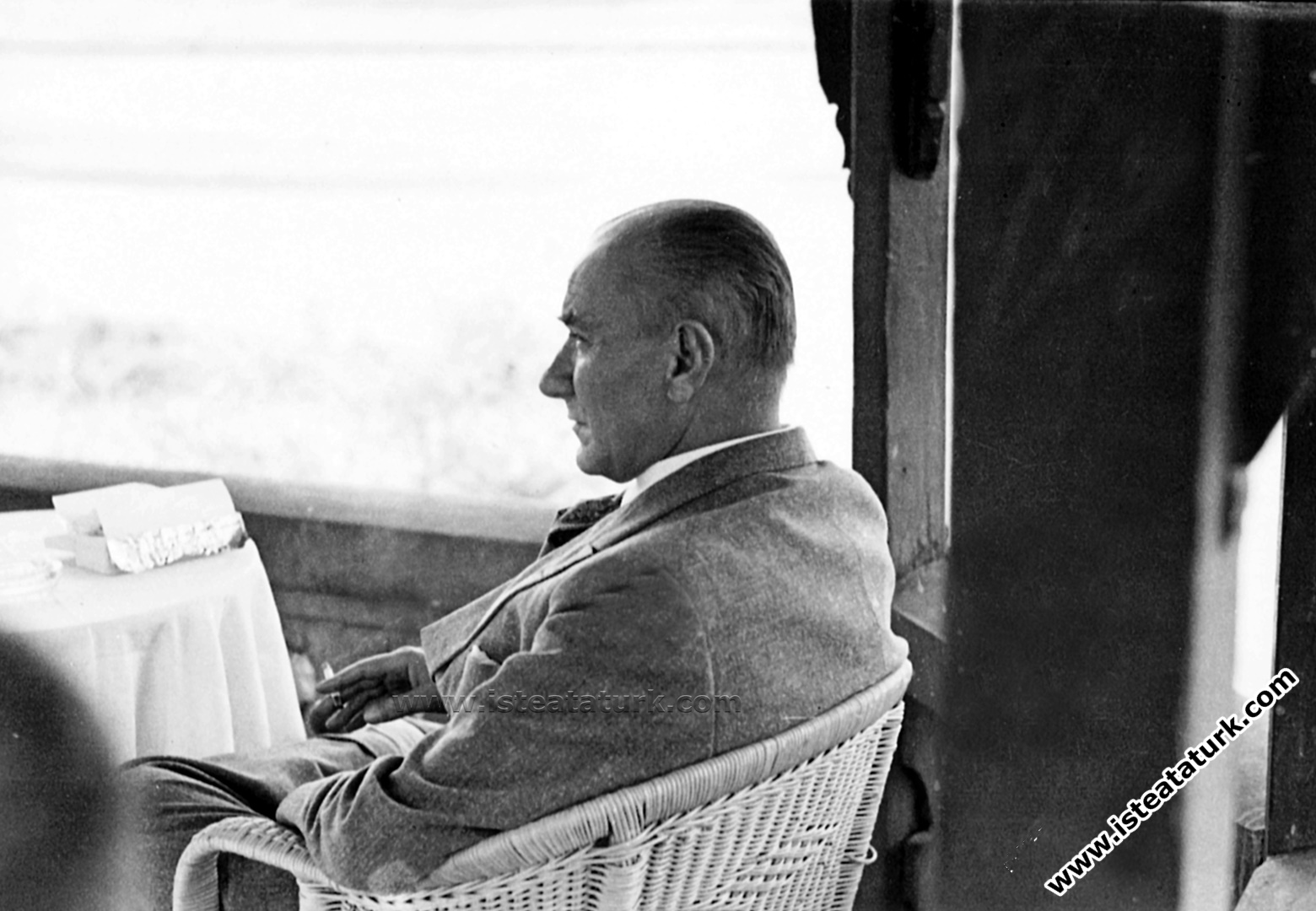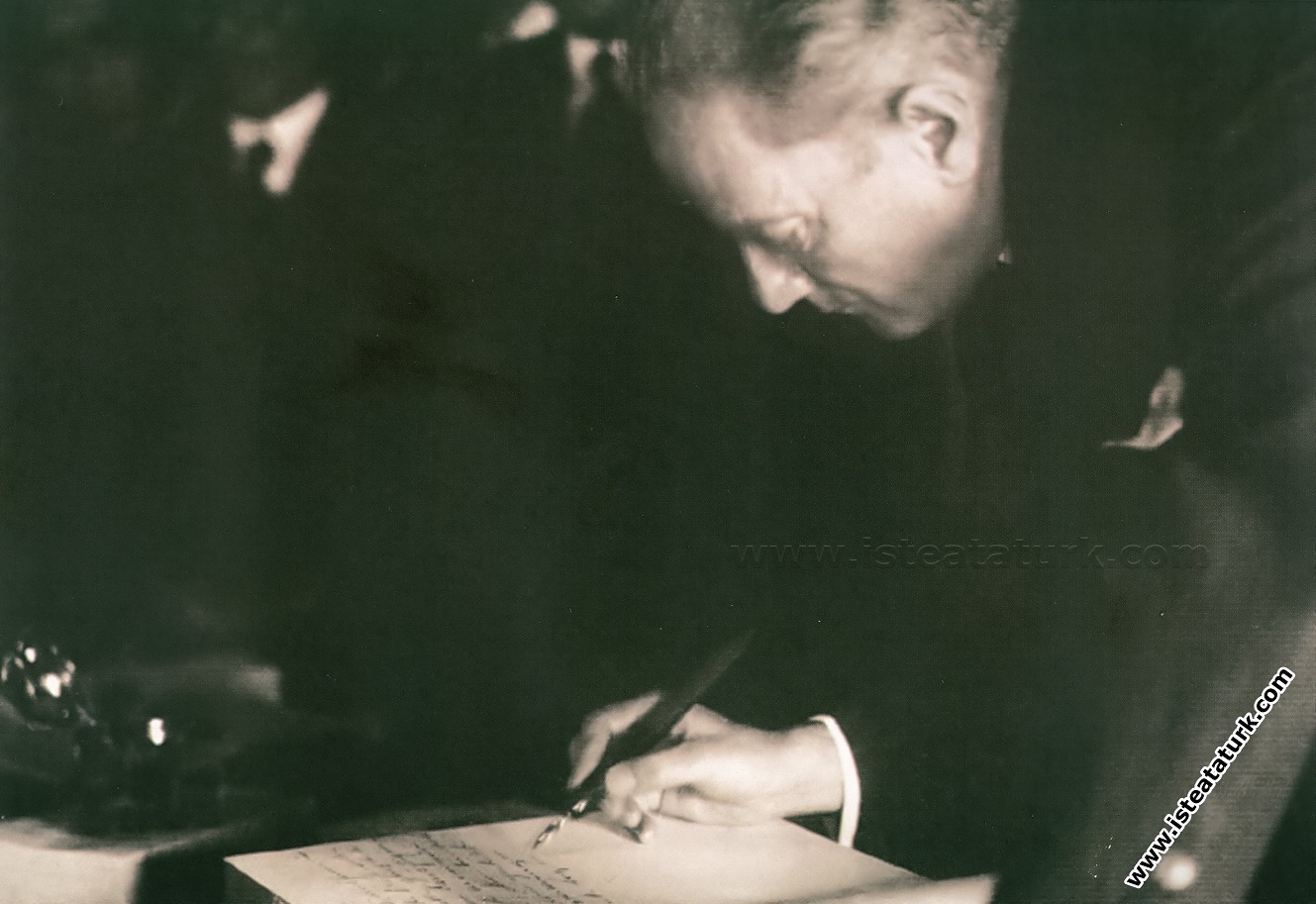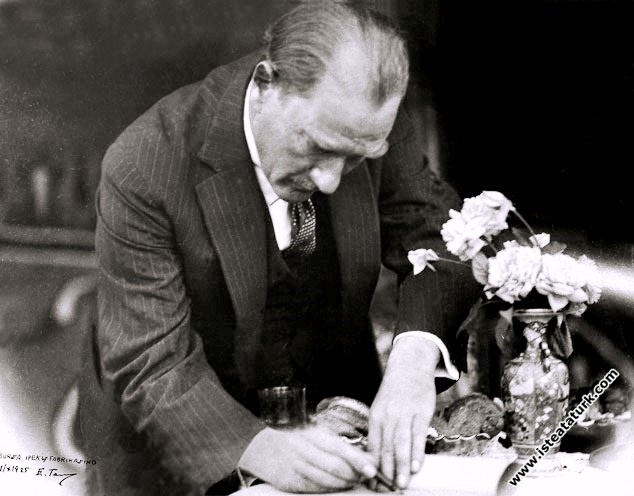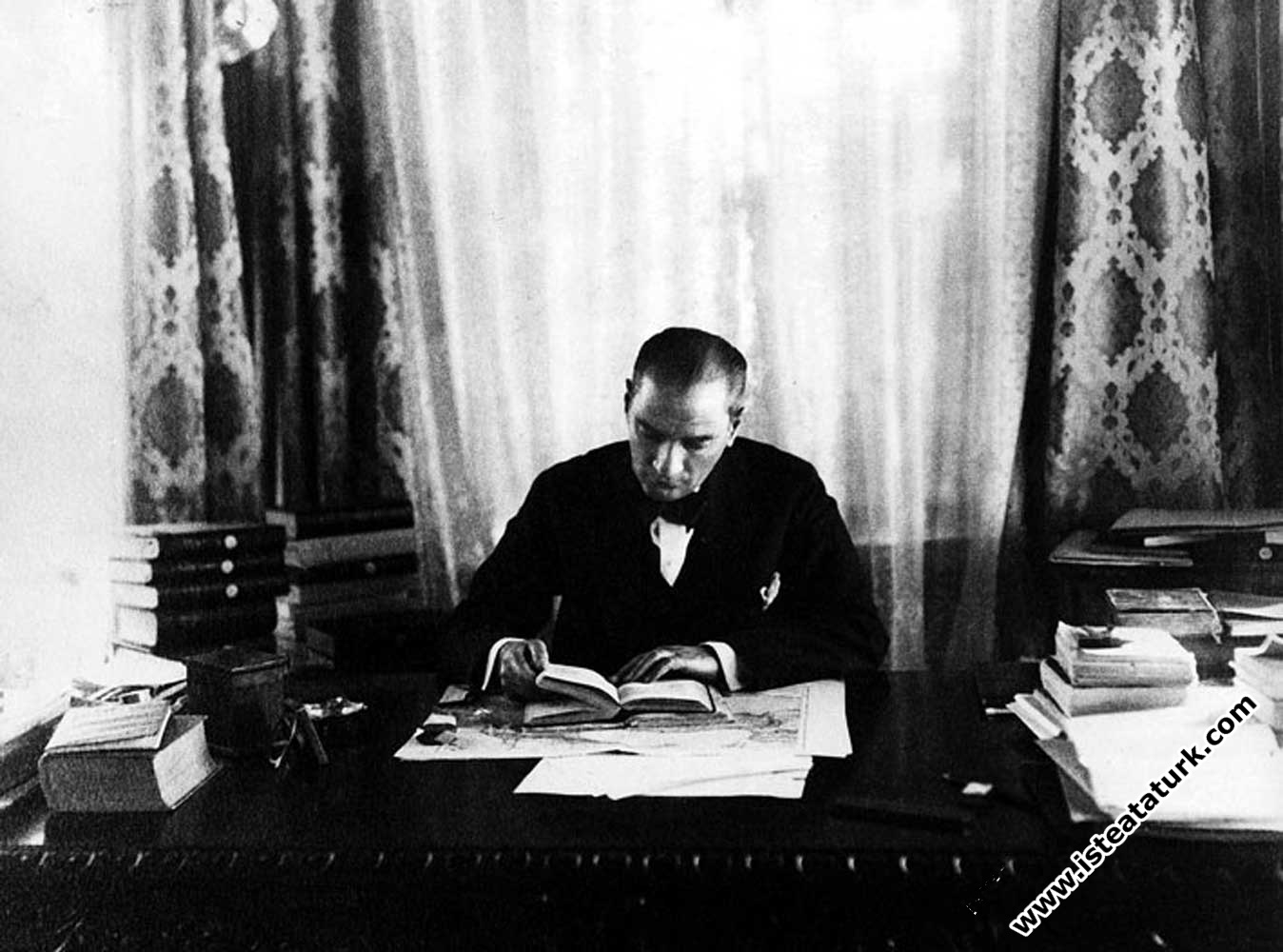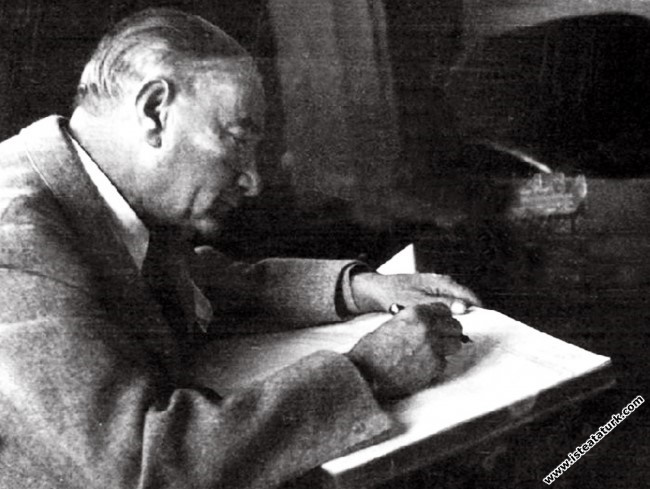
Atatürk's Thesis Concerning Central Asia As A Cradle Of Civilisation
Character Size
Atatürk's Thesis Concerning Central Asia As A Cradle Of Civilisations
Atatürk's Thesis Concerning Central Asia As A Cradle Of Civilisations
The paper that I am about to present to you is entitled “Atatürk’s Thesis Concerning Central Asia as a Cradle of Civilization.” But before going any further I do want to emphasize however, that the purpose of this paper is not to enter into dispute over the rights or wrongs of this thesis, or even to try to prove something which for the present remains unclear.
Rather, if there is something upon which I would like to dwell, it is the cultural heritage that all of us enjoy today and to emphasize the share in this heritage that is the common right of all mankind. As I present this paper the humanistic ideals of Atatürk and the love that he felt for all people will be made evident. It is from this standpoint especially that I would like you to evaluate this paper.
Atatürk was a man who gave great importance to the subject of Turkology especially in connection with history and language. In fact, in this area he was an outstanding pioneer who led in deep and extensive studies of this subject. Apart from being a great soldier, statesman and revolutionist, Atatürk is also remembered as a man of ideas who wanted to have the history of the “Turkish Revolution” -that describes the events of his own time- and the history of the Turkish State from the beginning until today recorded truthfully. That is why in Turkey today “Atatürk and Atatürkism” is an integral part of studies in Turkology.
Following the Great War of Independence, the young Turkish Republic was established in 1923, and one of its most revolutionary moves was in the area of culture, including national history. Then between the years 1930-1937 a new and important scientific theory came to the fore: “The Turkish History Thesis.” This thesis was presented to and discussed in some detail by foreign specialists and others attending the First and Second Turkish History Conferences in 1932 and 1937. In their deliberations they tried to establish certain facts pertaining to the subject.
It is the purpose of his thesis to examine the roots of the Turkish nation and establish the true course and development of Turkish history within the framework of world history. Indeed, this thesis was based on the concept of “the national history” of the Turks, rather than the traditional concept of the “history of the religious community.”
Prior to Atatürk, the history of the Turkish nation was thought to be merely the story of a dynasty that went back to the foundation of the Ottoman State. Or else it was seen as a part of the history of Islam, but here the role of the Turkish people was not emphasized sufficiently. Their history, literature and culture belonging to the pre-Ottoman and especially the pre-Islamic ages were particularly neglected. Further just like Ottoman historians, Seljuk historians were not interested in the pre-Islamic age and also left the rich cultural heritage of the ancient Turks in the darkness of past ages.
Thus, if the origins of Turkish culture and history are to be firmly established, then we have to start with the movement of the Turkic peoples from Central Asia and study their development from those early beginnings. This reveals the part played by the Turks in the unfolding of world history, and their place in the history of civilization.
It should be stressed here that nationalist movements that gained ground in the Ottoman Empire during the 19th century and the later establishment of more independent states, all contributed to a deeper realisation of national consciousness amongst the Turks who then formed the heart of the Empire. This growing awareness among the Turkish intelligentsia gave birth to a new movement called “Turkism” as opposed to “Ottomanism”, “Islamism” or “Westernism”. Because of this, studies in the field of national history (as mentioned earlier) were begun -but only in a limited way- following the Reform Movement of 1839 called “The Tanzimat”. Atatürk, however, initiated more serious studies which resulted in a greater depth of integrity as we have discussed.
According to the historical thesis of Atatürk, apart from the national viewpoint of history there is also an aspect of universality that has to be considered. In other words, Atatürk’s viewpoint and interpretations of history were not restricted merely to the historical limits of his own nation or national community. Rather, it encompassed world history and recognized the universal dimensions of human culture. He looked for the origins of human culture within these universal dimensions. He also understood and wanted others to understand that every nation has a real share in the legacy of human culture that must be respected by everybody.
This universality of Atatürk’s viewpoint as discerned in his thesis is rooted in his respect for humanity.
When we come to examine the history of mankind, we note that four civilizations follow one another in a row. These are:
1) The civilization of ancient Egypt and Mesopotamia
2) The civilization of the classical Greek Age
3) The civilization of the age of Islam during the Middle Ages
4) The civilizations of Western Europe
Nevertheless, we ask, were there no other roots apart from these four civilizations? And just where were these civilizations from? According to Atatürk’s thesis, in the light of archeological, anthropological and ethnological knoVledge, the answers to these questions can be found in Central Asia. One reason for this conclusion are the plentiful pre-history artifacts in the Central Asian sub-stratas which indicate rich cultures and craft skills dating back to the ages before the Christian era. Indeed, a vast cultural inheritance is locked into the soil of Central Asia.
According to this theory, a pre-historic civilization developed in Central Asia and this civilization lived on through the stone, bronze and iron ages. Then it was spread by the migrating peoples to Mesopotamia, Anatolia, Egypt and Europe where new civilizations sprang up and were later developed.
Again, according to Atatürk’s theory, the origin of the pre-historic peoples of Anatolia was in Central Asia. This is evidenced by the discoveries in various archeological digs throughout Anatolia which show a distinct similarity to the artifacts of by-gone civilizations in Central Asia.
The reason for the movement of people away from Central Asia in the early period of history was a change in climatic conditions. Central Asia lies in a region of low rainfall, and during an early period in its history, it became even more dry and waterless so much so that the people living there were forced to leave and find more fertile regions.
This flood of people from the continent of Asia migrated by the way of the North and the South, taking with them elements of the Central Asian civilizations. These people from Asia sowed the productive soil of their new found lands with herbs, plants and grain crops. They employed skills of animal husbandry and raised sheep, goats, cattle, pigs, dogs and horses. They also knew how to work gold, silver and copper. Thus these wanderers from north of the Black Sea, Egypt and Anatolia who journied into Europe and the Balkans were influential elements in the “European Neolithic Civilizations”.
Here then, we can see how Central Asia was a cradle of civilization, leaving its indisputable imprint on many civilizations that were to follow.
Yet together with this theory, Atatürk invites people to unite under the common ideals handed down through history. Outside of imperialistic opinions, yet without losing national independence, national characteristics and national culture, peoples can be drawn together through their universal historical and cultural heritages. Thus, without the influences of race, colour or religion, this common heritage united the ancient peoples of the continents. This was *basic to the elevation of mankind and the fulfillment of their ideals. Atatürk puts it this way: “Nations with advanced cultures cannot contain those cultures within themselves, but such cultures will eventually permeate cultures of other nations and encompass continents.”
So again we see how the pre-history peoples of Central Asia lived within these rules and then in the course of time took elements of their culture and civilization with them when they moved to other parts of the world.
Before concluding my paper I would like to emphasize this point again: Atatürk’s theory of history is in no way based on imperialism or chauvanism. In the same way, neither does it claim that the races of mankind, history and language come from one common origin. With regard to this subject Atatürk’s one desire was to clarify how the earliest civilizations of Central Asia took elements of their cultures to Anatolia, Europe and other parts of the world as they migrated extensively, with the result that their influence was eventually seen in the disparate cultures of many other nations and peoples. In this way only can it be said that Central Asia is one of the cradles of civilization.
It cannot be denied that even today mankind is bound together by the chains of a universal and common heritage, which can only work for the good of people and foster ideals of love one for the other. In this connection Atatürk once said: “ The only way to make people happy is by combining movement and energy, and to meet their common moral and physical needs. The real happiness of mankind in world piece shall be realized only through the increase in numbers and success of individuals subscribing to these high ideals. For this reason the more idealistic people are, the happier the world will be.”
On the occassion of the Atatürk Centenary, UNESCO said “Atatürk was an extraordinary pioneer of ideals for the maintenance of peace throughout the world, and for developing a spirit of mutual understanding among all the people of the world. He devoted his life to establishing the age of cooperation and unity, without discrimination with regard to race, religion or colour.”
Even before UNESCO was founded, Atatürk said “Inhabitants of the world should be trained to stand removed from jealousy, greed and revenge.” To this he added, “The welfare of humanity must supplant hunger and oppression.”
Atatürk’s idea of mankind’s common cultural inheritance and the effort he went to, to prove and explain it is only one aspect of how he felt about the need for people of the world to draw closer together in mutual love and respect. In today’s world of developed and developing cultures, numberless races, peoples and national groups, there is an even greater need for light to be shed on the share that all people have in this legacy.
According to Atatürk, not enmity, but rather the fellowship of man must be consciously pursued. Amongst nations and peoples appreciation of the invaluable legacy of a common cultural origin must never be abandoned or give way to chauvanism or racism. Neither should it be forgotten that in certain areas each and every culture owes something to the cultures of others.
Thus Atatürk’s famous words “Peace at home, peace in the world” are founded on the highest of ideals that are themselves established on humanitarian bonds that are the product of mankinds common cultural roots.
NOT: This paper was presented at the XXX. Permanent International Altaistic Conference held at Indiana University (U.S.A.) between June 19-25, 1987.
*Atatürk Kültür, Dil ve Tarih Yüksek Kurumu Eski Başkan Vekili ve Atatürk Araştırma Merkezi Eski Başkanı
Prof. Dr. Utkan Kocatürk
Source: ATATÜRK ARAŞTIRMA MERKEZİ DERGİSİ, Sayı 9, Cilt III, Temmuz 1987
